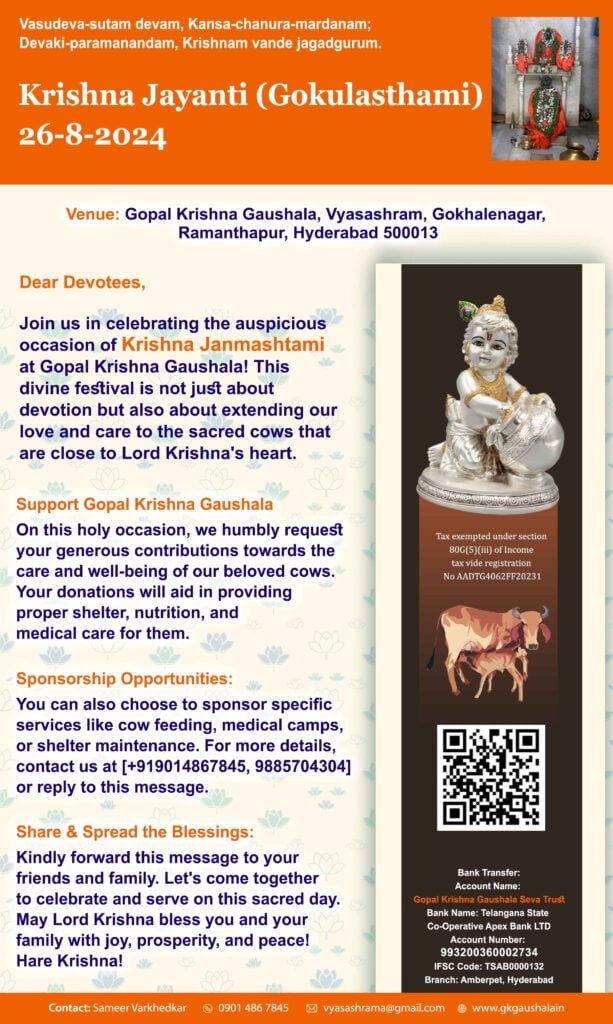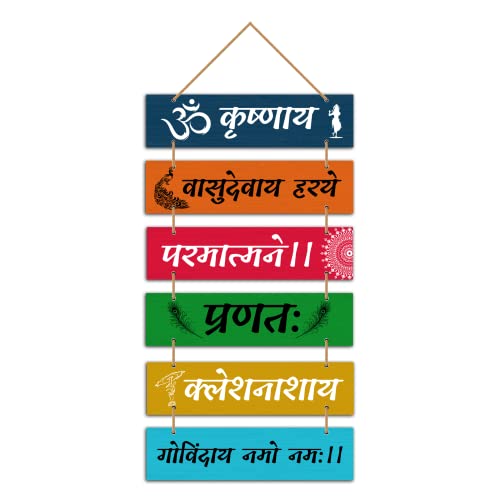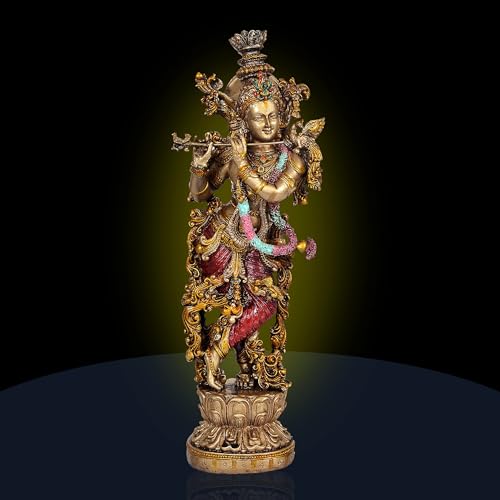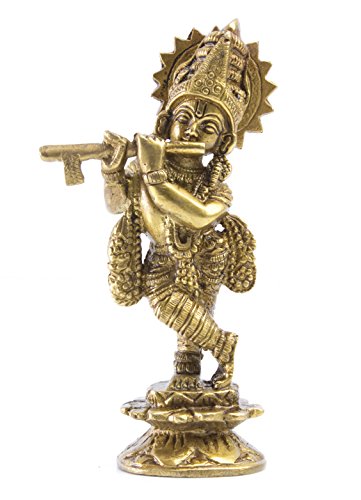
Introduction to Krishna Janmashtami (Gokulashtami)
Krishna Jayanti, also known as Gokulashtami, holds a place of profound reverence in Hindu culture as the birth anniversary of Lord Krishna, one of the most cherished and celebrated deities in Hinduism. Falling on the eighth day (Ashtami) of the Krishna Paksha (dark fortnight) in the month of Shravana, this festival is marked by a deep sense of devotion and joy. In 2024, Krishna Jayanti will be celebrated on the 26th of August, and preparations are already underway in various homes and temples worldwide.
The significance of Krishna’s birth is rooted in Hindu mythology and scriptures. According to the Mahabharata and Bhagavata Purana, Krishna was born in the city of Mathura to Devaki and Vasudeva. His birth was surrounded by miraculous events, signifying his divine nature. Krishna’s arrival was meant to vanquish the tyrant Kamsa, Devaki’s brother, and to restore dharma (righteousness) in the world. This narrative endows Krishna Jayanti with not merely historical significance but a symbolic one, representing hope, the triumph of good over evil, and divine intervention in human affairs.
The celebrations of Krishna Jayanti are multifaceted, encompassing a variety of traditional activities and rituals. Devotees partake in fasting, night vigils, and the adornment of Krishna idols, often depicting moments from his infancy such as the charming episode of him stealing butter. The rituals and pujas performed on this day are believed to bring devotees closer to Krishna, aligning their lives with his teachings. These practices underscore the festival’s importance within Hindu communities, celebrating Krishna’s playful and benevolent aspects alongside his profound divine wisdom.
Krishna Jayanti’s resonance is not confined to religious expression alone; it carries a cultural vibrancy that permeates communities. Singing devotional songs, enacting dramas based on Krishna’s life, and partaking in communal feasts enhance the celebratory atmosphere, fostering a collective sense of unity and joy. This confluence of spirituality, tradition, and communal participation underscores why Krishna Jayanti is celebrated with such fervor and delight by millions worldwide.

Rituals and Celebrations of Krishna Janmashtami
Krishna Jayanti, also known as Gokulashtami, is a festival rich with vibrant rituals and customs that echo the devotion and cultural diversity of India. Fasting, or upavasa, is a common practice during Krishna Jayanti, observed with utmost reverence. Devotees often fast throughout the day, breaking it at midnight—believed to be the time when Lord Krishna was born. These fasts can be total or partial, depending on individual beliefs and health considerations.
Night-long vigils, referred to as jagarana, are another significant aspect of the celebration. Devotees stay awake all night chanting mantras and reciting scriptures, primarily focusing on the Bhagavad Gita and other texts associated with Lord Krishna. These devotional activities foster a deep spiritual connection and serve as a communal experience of prayer and meditation.
The festival’s cultural richness is further highlighted through the reenactment of Krishna’s life events, particularly his childhood escapades, in plays and dances known as ‘Krishna Leela.’ These performances bring to life the legendary tales of Krishna’s mischievous and miraculous deeds—such as his playful stealing of butter (Makhan Chor) and his heroic acts. The delightful portrayal of these stories through dance, music, and drama captivates audiences of all ages, fostering a sense of unity and joy.
Special foods prepared during Krishna Jayanti, known as ‘Prasadam’, hold great significance. These offerings, made with love and devotion, include a variety of sweets and other traditional dishes. Some of the popular items are Makhan (butter), laddoos, and milk-based delicacies. The distribution of Prasadam symbolizes the sharing of Krishna’s blessings and abundance.
In Maharashtra, the tradition of ‘Dahi Handi’ adds a unique flavor to the celebrations. Inspired by Lord Krishna’s love for butter, young men form human pyramids to reach and break a pot filled with curd or butter, suspended high above the ground. This lively and energetic event symbolizes Krishna’s playful nature and is marked by immense enthusiasm and communal participation.
Through these diverse rituals and celebrations, Krishna Jayanti not only commemorates the birth of Lord Krishna but also reinforces the cultural and spiritual fabric that binds communities together.
Significance of Krishna Jayanti in Modern Times
While Krishna Jayanti, also known as Gokulashtami, is rich in ancient traditions, its significance has seamlessly woven into the fabric of contemporary society. The teachings of Lord Krishna, particularly those articulated in the Bhagavad Gita, continue to be a guiding beacon in modern life. Central to Krishna’s philosophy are the concepts of dharma (duty), karma (action), and bhakti (devotion). These transcendental principles offer insightful perspectives that are highly relevant today.
Lord Krishna’s elucidations on dharma provide a profound understanding of one’s purpose and responsibility. Professionals and students alike draw inspiration from his counsel on fulfilling duties with integrity, regardless of the outcomes. The tenet of karma, which emphasizes action without attachment, is another crucial lesson. It encourages individuals to engage wholeheartedly in their pursuits without fixating on results, thus reducing stress and enhancing mental well-being. Bhakti, or devotion, highlights the importance of a selfless, devoted approach to life, fostering an environment of empathy, compassion, and community.
- Radha Krishna Staute || product dimensions- 17 x 7 x 20 cm (LXWXH)||Weight-270 GR|| Material – Metal(Aluminium)|| Color …
- It is a perfect gift for Janmashatmi , wedding , house warming , Anniversary or festive occasions ,It can be a Memorable…
- This Sculpture is ingeniously created by craftsmen in India, the lovely statue brings goodness and benevolence to your h…
- Dimensions : Length : 3 Inches x Width : 2.3 Inches x Height : 8.5 Inches | Weight : 340 g | Material : Aluminium
- They add a touch of positive energy power and calmness to your room with its shiny appearance.
- This beautifully handmade god showpieces adds a beautiful look to your home and temple. They add a touch of positive ene…
- Dimensions: 12 cm x 17 cm x 8 cm
- Material- Metal
- Best Gift For Your Loved Ones
- Laddu Gopal Palna | Size: 16X8.5X20 CM (LXWXH) | Weight : 400 Grams || Material:Metal (Aluminium) | Color : Gold
- A unique decoration for the home aluminium metal art Jhulla for God Idols, Great for gifting during weddings, anniversar…
- A perfect and unique product for gifting, home pooja mandir decoration.
- Krishna jhula made of wood, available in small and big sizes Radha Krishna jhula as a wall hanging Krishna jhula made of…
- Bal Krishna jhula made of brass or copper, also available in big size Krishna jhula in the form of a singhashan, bed, or…
- Jhula designed for Radhe Krishna’s murti Sri Krishna jhula made of aluminium Krishna jhula as a decorative item for home…
The impact of these teachings extends into modern philosophical and ethical discourse. Krishna’s dialogue has been dissected and integrated into various philosophical frameworks, offering fresh insights into existential questions and ethical dilemmas. His emphasis on inner strength and resilience is particularly resonant in an era marked by rapid technological advancements and social upheavals.
Additionally, Krishna Jayanti serves as a vital conduit for cultural preservation and the transference of spiritual values across generations. The festivities, prayers, and recitations unite communities, reinforcing shared heritage and values. Amidst the fast-paced dynamics of present-day life, such celebrations anchor individuals to their cultural roots, fostering a sense of unity and continuity.
In essence, Krishna Janmastami is not merely a commemoration of historical events but a living tradition that continually adapts, enriching personal and communal lives through the perennial wisdom of Lord Krishna.“`html
How to Celebrate Krishna Jayanti at Home
Celebrating Krishna Jayanti (Gokulashtami) at home offers a unique opportunity to create a sacred and joyous atmosphere right within your personal space. To begin with, setting up a home altar is essential. Choose a clean and quiet corner of your home where you can place an idol or image of Lord Krishna. Decorate the altar with flowers, lights, and other traditional items such as incense sticks, diya (oil lamps), and Sandalwood paste.
Next, performing a simple puja (worship) is central to the celebration. Start by reciting prayers and chanting mantras dedicated to Lord Krishna. You can then offer fruits, sweets, and other prasad (sacred food) as part of the ritual. This can be a collective family activity, allowing each member to contribute to the ceremony.
Engaging in devotional singing or bhajans can heighten the spiritual experience. Encourage family members, especially children, to participate by singing songs that glorify Krishna’s life and deeds. This can create a harmonious and uplifting environment, spreading joy and devotion throughout the home.
Preparing traditional dishes such as kheer, puris, and butter-based sweets is another delightful way to celebrate the occasion. Engaging children and family members in the cooking process can be both educational and enjoyable. Complement the culinary experience by decorating your house with fresh flowers and intricate rangoli designs at the entrance, welcoming guests and invoking blessings.
To involve children more deeply, consider organizing storytelling sessions and craft-making activities that highlight various episodes from Krishna’s life. This not only educates them about the festival’s significance but also makes the celebrations more interactive and memorable.
Finally, despite celebrating at home, connecting with the larger community can enhance the festive spirit. Utilize online resources and virtual events to engage in broader Krishna Jayanti activities, including live-streamed temple ceremonies and interactive sessions with spiritual leaders. These connections enable you to be part of a wider communal celebration, ensuring that the essence of Krishna Jayanti is felt profoundly, even within your home.“`











